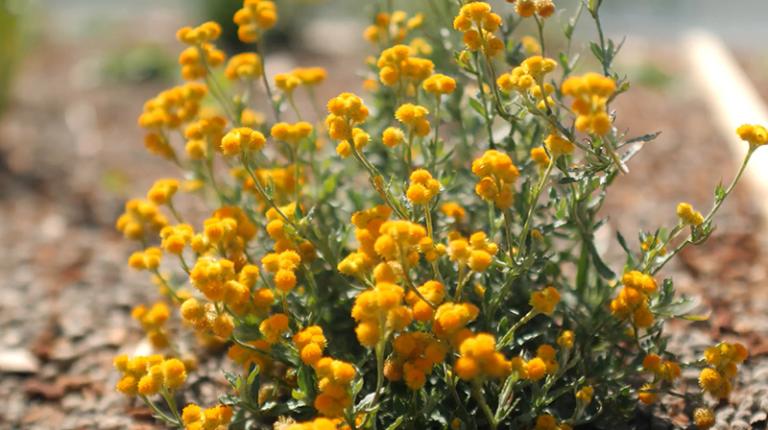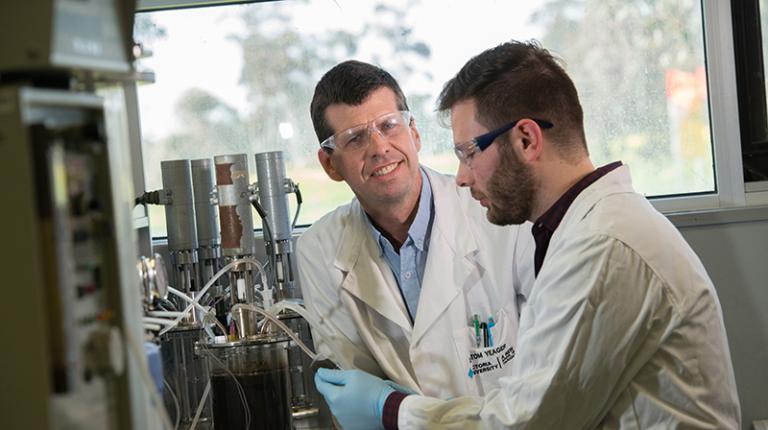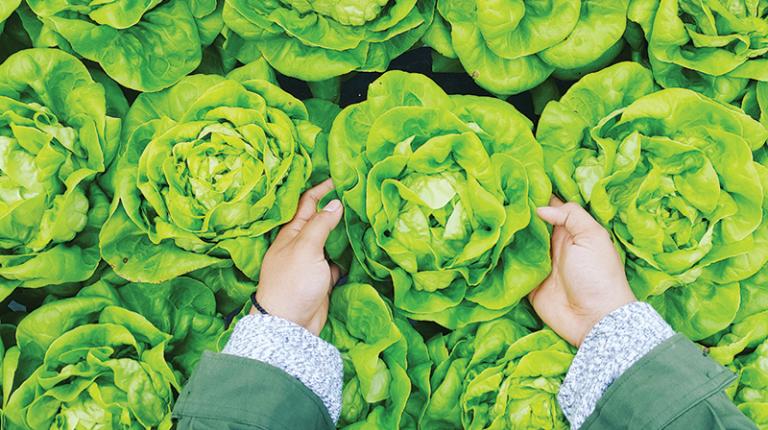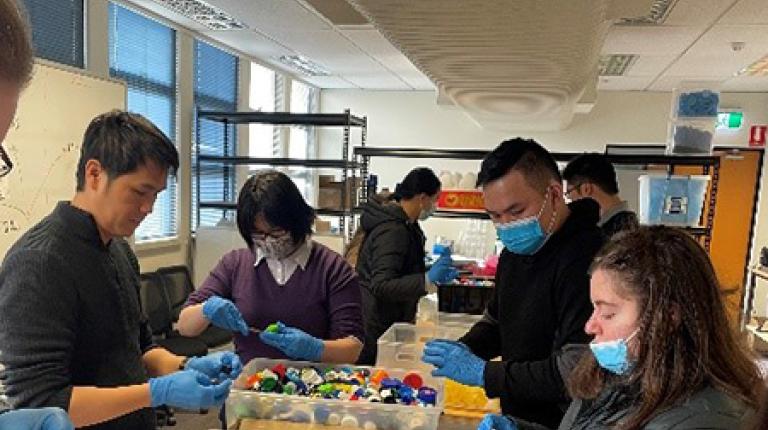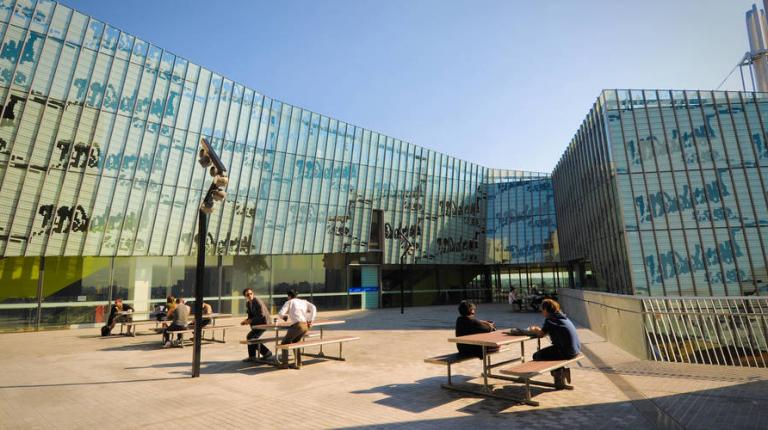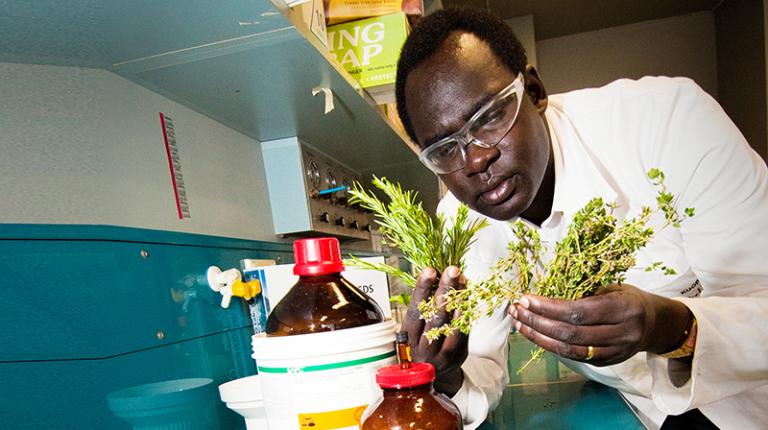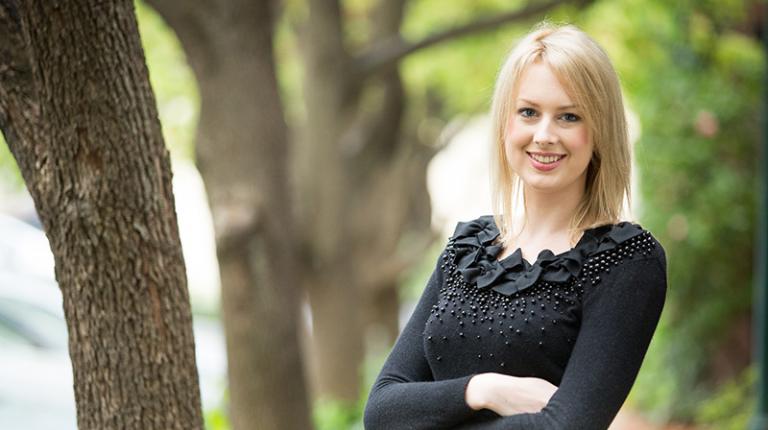The scarcity of sound soils, especially in urban areas, often forces engineers to construct the pavement on problematic subgrade soils such as expansive clays. In this study, Ehsan Yaghoubi and Maurice Guerrieri from VU, with Mohammadjavad Yaghoubi from the Australian Road Research Board and Federation University, and Nithin Sudarsanan from North Carolina State University, mixed expansive clay with 10, 20, and 30% sand-size recycled glass (RG) to assess suitability as a construction base using modelling and stress-strain tests. By adding recycled glass, the associated cost involved in replacing problematic soil is avoided. The outcomes aim to promote sustainable construction materials and approaches by the use of environmentally clean recycled aggregates, such as RG, for improving subgrades with problematic soils.
Ehsan Yaghoubi undertook a similar study again with Nithin Sudarsanan from North Carolina State and Arul Arulrajah from Swinburne University of Technology to assess the viability of demolition wastes as aggregate base course for pavements. The sustainable construction approach by utilising recycled aggregates has increasingly been the focus of highway construction industries and local road authorities in recent years. The research team tested the stress-strain performance of three types of recycled construction and demolition wastes: recycled concrete aggregate (RCA), crushed brick (CB), and waste excavation rock (WR). Under the loading conditions CB and RCA performed better than conventional virgin materials, while WR was worse.
Water reclamation or wastewater reuse in the recycled paper industry has always been a momentous task. The main driving forces for the adoption of process wastewater treatment technologies are environmental regulations, costs of wastewater discharge and the high cost of freshwater. Recent developments have made it possible to recover treated water and valuable compounds such as fibres, making water recycling technologies economically viable. Ngoc Han, Jianhua Zhang, Manh Hoang and Stephen Gray from ISILC, collaborated with Zongli Xie from the CSIRO to review the process for wastewater reuse in the recycled paper industry. To provide optimal outcomes, the maintenance of the balance between process variables through water management is important for maintaining efficient water use and lowering the need for consumption of additional fresh water.
The textile industry generates a huge quantity of wastewater during manufacturing, limiting its environmental sustainability. Membrane distillation (MD), which is driven by thermal-induced vapour pressure difference, is being considered as an emerging economically viable technology to treat the textile wastewater for reuse. However, due to the presence of inducing surfactants causing membrane wetting, passing of the contaminants through the membrane, complete separation of the water by MD has not been attained. This review, by ISILC, CSIRO and Chinese university researchers, presents current progress on the MD process for textile wastewater treatment with a focus on membrane wetting, the types of membranes applied as well as the fabrication or modification of membranes for anti-wetting properties. This article aims at providing insights in membrane design to enhance the MD separation performance towards commercial application of textile wastewater treatment.
Despite the popularity of zero waste (ZW) as a concept, the plastic recycling rate in Australia is at only about 9.4% (in 2017–2018). The state of Victoria has proposed an ambitious 10-year plan to upgrade its waste and recycling system and to divert about 80% of waste from landfills by 2030. This study by researchers Anne Ng, Srenghang Ly, Nitin Muttil and Cuong Ngoc Nguyen, uses simulations to assess the feasibility of achieving 80% reduction by 2030 and zero plastic waste by 2035. The model uses six key considerations, including the rate of plastic consumption, waste to landfill, diversion rate, recycling rate, relative accumulative effort, and cost. Results confirm that Victoria’s current plan for achieving an 80% reduction by 2030 is possible; however, less likely is achieving zero plastic waste by 2035. Improvements to achieve the ZW plan by 2035 requires slight changes to the input factors, including: product recyclability, packaging polymer consumption, non-packaging polymer consumption, processing facilities’ capacity, recycling options efficiency, reuse/end-of-life proxy rate, and sorting efficiencies.
Hotels are the most common form of accommodation for tourists, but very few studies have analysed the environmental commitments of hotels in Australia. Researchers, Joanne Pyke and Michael McGrath from VU, with Ajay Khatter from William Angliss Institute and Leanne White interviewed key stakeholders on hotel environmental sustainability policy and practices (ESPP). Owners and shareholders with their financial investment are the primary influencers on ESPP. Hotels themselves and, more so, hotel chains are best placed to engage with and implement environmental sustainability policies and practices due to their organisational scale; specifically, their training and operational resources. A diversity of stakeholder perspectives and influences is required, however, as without the guidance of the stakeholders optimal outcomes and value cannot be obtained. Managing the inherent conflict between ethical and environmental responsibility, and commercial outcomes can only be achieved by all stakeholders working together.




